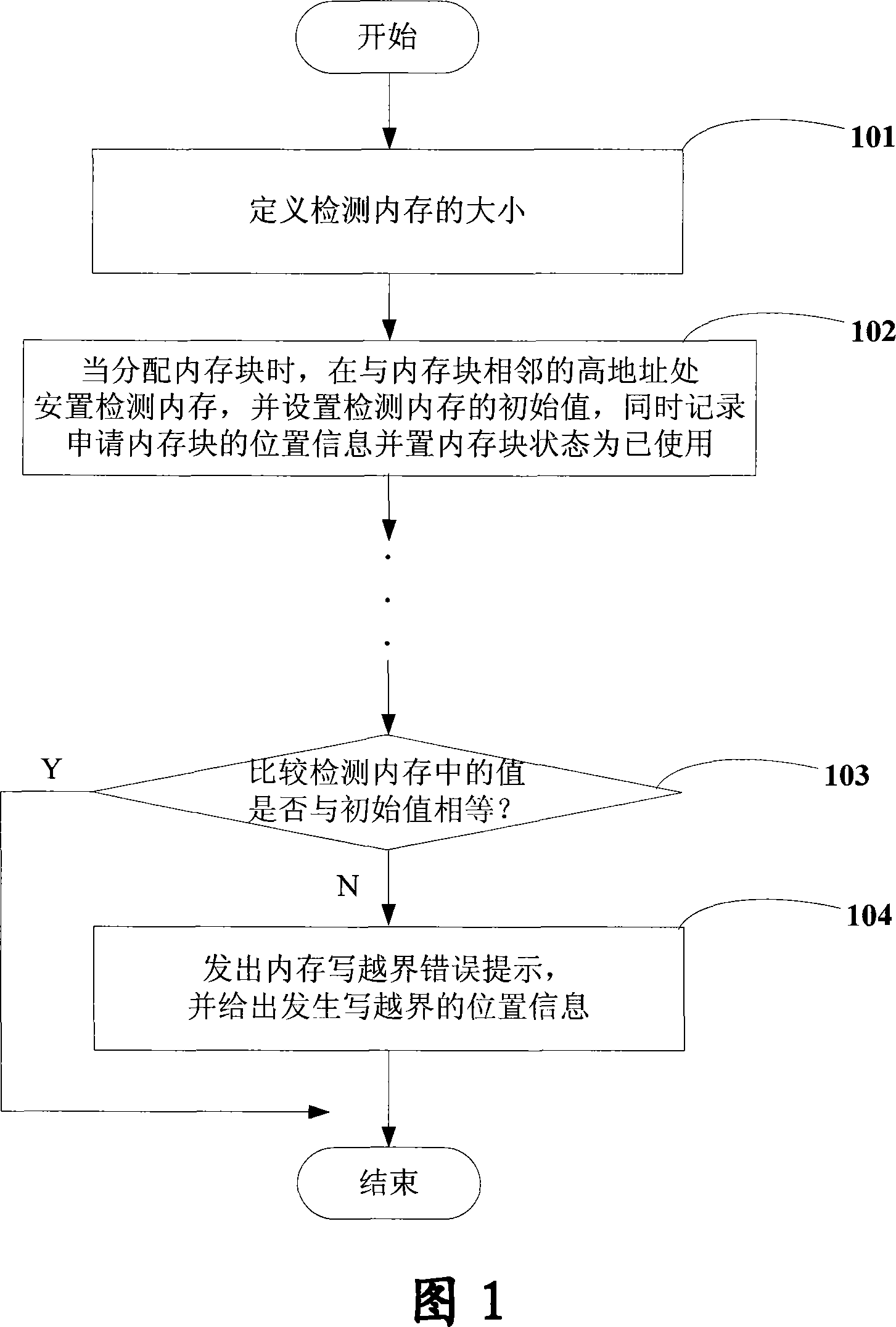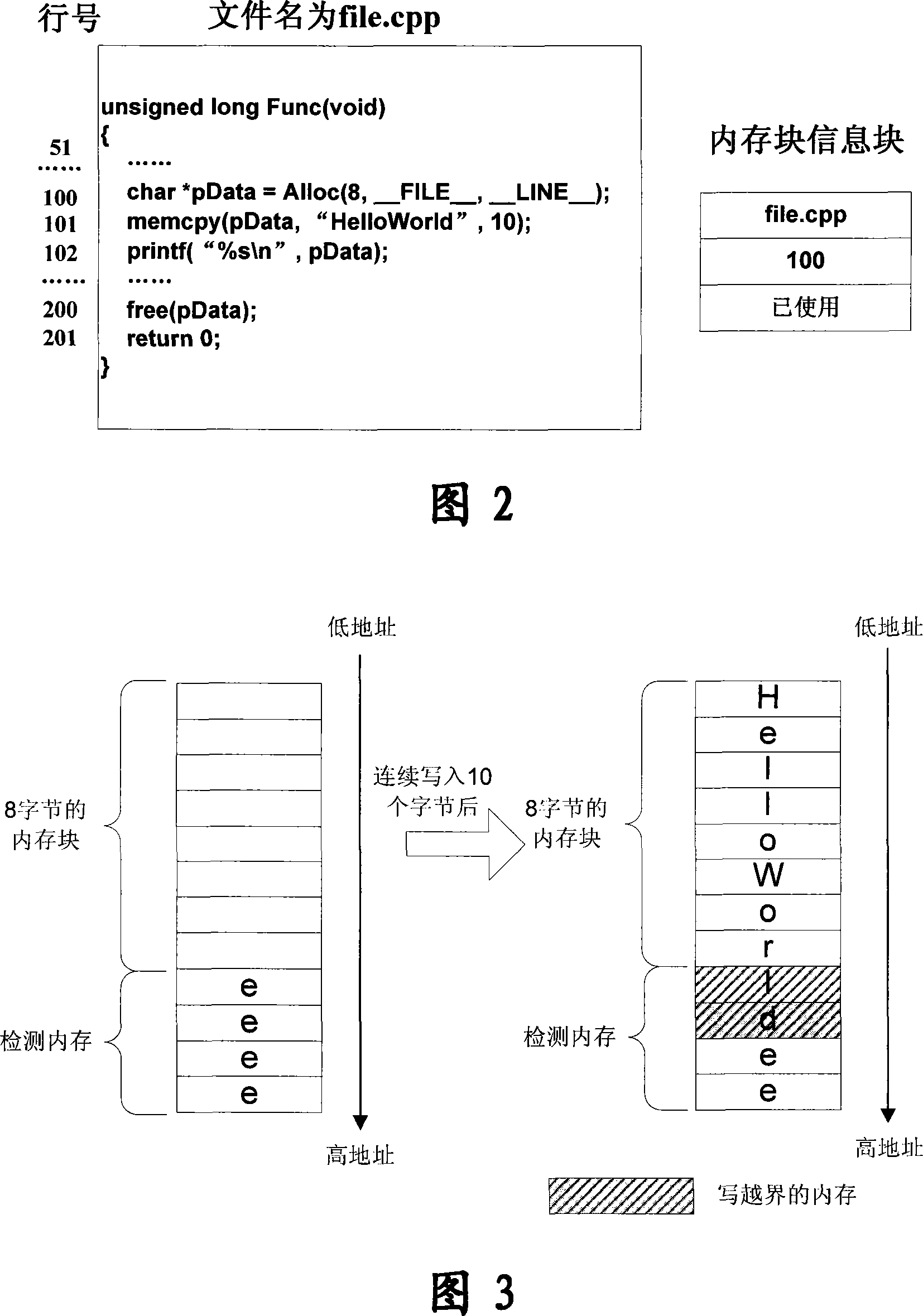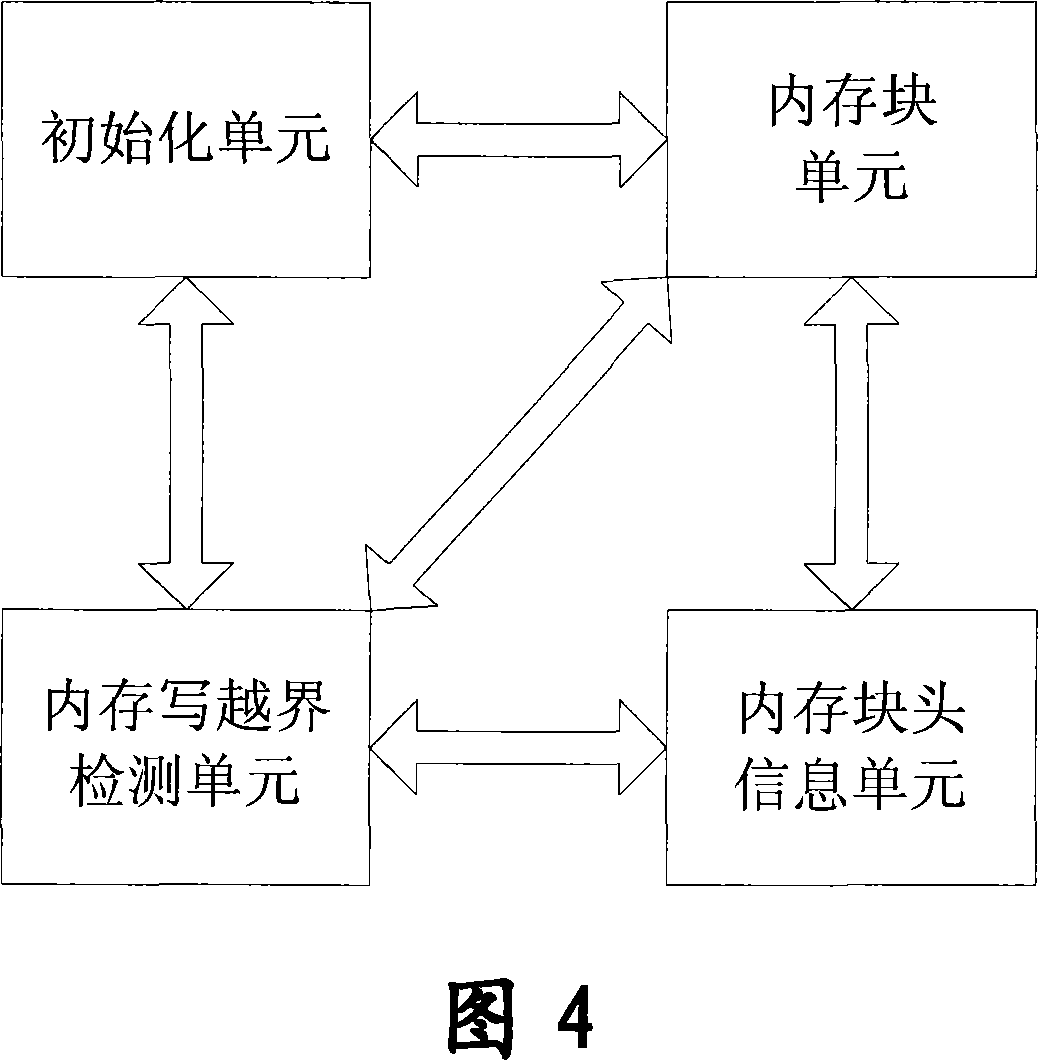Embedded system memory write-overflow detection method and system
An embedded system and detection method technology, applied in the field of memory management, can solve problems such as unusable, difficult to find and locate, high memory overhead, etc., to achieve the effect of increasing application time, reasonable memory overhead, and avoiding impact
- Summary
- Abstract
- Description
- Claims
- Application Information
AI Technical Summary
Problems solved by technology
Method used
Image
Examples
Embodiment Construction
[0030] With the detection method of the embedded system memory that the device provided by the present invention realizes to write out of bounds, its steps are as follows: (a) define and detect the memory size; Place the detection memory at the place, and set the initial value of the content in the detection memory; (c) when performing memory write out-of-bounds detection, compare whether the value in the detection memory is equal to the initial value, and if not equal, judge the limit of memory write out-of-bounds . Through the above-mentioned steps and measures of the present invention, it is possible to detect and locate in time after a write out-of-bounds error occurs in the allocated memory block, so that unpredictable results can be avoided in the user system.
[0031] The technical scheme of the method of the present invention will be described in detail below in conjunction with the embodiments and accompanying drawings.
[0032] As shown in Figure 1 is the flow chart...
PUM
 Login to View More
Login to View More Abstract
Description
Claims
Application Information
 Login to View More
Login to View More - R&D
- Intellectual Property
- Life Sciences
- Materials
- Tech Scout
- Unparalleled Data Quality
- Higher Quality Content
- 60% Fewer Hallucinations
Browse by: Latest US Patents, China's latest patents, Technical Efficacy Thesaurus, Application Domain, Technology Topic, Popular Technical Reports.
© 2025 PatSnap. All rights reserved.Legal|Privacy policy|Modern Slavery Act Transparency Statement|Sitemap|About US| Contact US: help@patsnap.com



